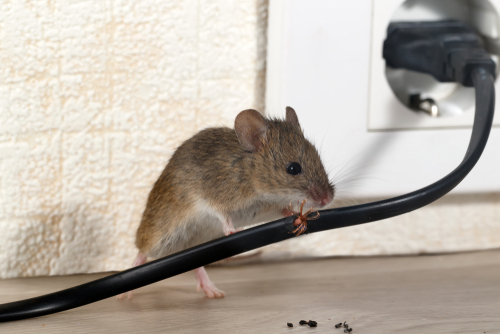Facilities professionals know what a problem pests can be for the commercial properties they manage. To control pests, which could affect the cleanliness, appearance, and safety of facilities, the U.S. Environmental Protection Agency (EPA) recommends that professionals implement an Integrated Pest Management (IPM) program, an environmentally friendly and commonsense approach that could apply to any facility or landscaping. It focuses on pest management and recommends pesticides only when necessary. Healthcare facilities should follow a specific IPM as specified by the EPA.

Common Types
The most common types of pests, according to the EPA, include:
- Ants
- Bedbugs
- Cicadas
- Cockroaches
- Mosquitos
- Rodents, such as mice and rats
- Stink bugs
- Termites
IPM Objectives
Facilities professionals should implement an effective IPM program that meets the following EPA-recommended objectives:
- Identify pests, and monitor progress. Note pests found in each facility, how the pests are being monitored, their location, and what types of inspections are being done.
- Set action thresholds. Focus on the size, scope, and intensity of the plan to determine what the pest population is in a facility. These thresholds should be based on the pests’ nuisance, health hazard, and economic threat.
- Prevent pests. There are simple steps facility professionals can take to prevent pests from forming in facilities:
- Reduce clutter. Eliminate any collection of materials in a facility where pests can hide; feed on various materials; drink, especially near water leaks; and breed without being disturbed.
- Weatherize buildings to prevent pests from entering. Seal all penetrations in the foundation and cracks around plumbing and wiring.
- Remove trash. Empty trash bags before they produce strong odors.
- Cut overgrown vegetation. Inspect all outside bushes and trees, and trim any that touch the facilities.
- Ensure dining and food storage areas are properly maintained. Management should consider limiting food and beverages only to authorized break areas to further control pest infestations.
- Install pest barriers. The U.S. Centers for Disease Control and Prevention (CDC) recommends building or covering doors or windows with metal.
- Remove standing water. Inspect irrigation systems, and call in a water cleanup company if necessary so these areas don’t become breeding grounds for mosquitos.
- Educate facility occupants on the IPM. Ensure there is an understanding of the importance of reporting pest sightings and taking precautions to keep work areas clean.
- Control pests
- Pest trapping—Most items needed for trapping pests can be purchased at discount stores, home-garden stores, and do-it-yourself pest control stores.
- Heat/cold treatment—The Bio-Integral Resource Center says that excessive heat technology can be applied to areas with pests like cockroaches, termites, woodboring beetles, carpenter ants, fleas, bedbugs, mold, pathogens, volatile organic compounds, and rats. There are also freezing technologies available to instantly freeze bugs.
- Physical removal—Mechanical or physical methods can be used to attack and destroy the pests.
- Pesticide application—Facilities professionals should use personal protective equipment (PPE) when applying pesticides and follow all instructions on the bottles. They should also refrain from smoking or eating. For more tips, including more information on proper PPE, visit the Pesticide Environmental Stewardship website.
Additionally, facilities professionals should document the use of pesticides by noting:
- Each pesticide application in an organized system
- Use of nonchemical control methods
- Ways to prevent future pest problems
IPM Benefits
While many schools succeed in implementing an IPM, facilities professionals in any facility should consider creating an IPM program for the following reasons, according to the EPA:
- Fewer pests—fewer pest complaints.
- Less pesticide application, as the emphasis is on prevention.
- Money savings can result from facilities professionals installing door sweeps and ensuring windows and doors close tightly; pest control costs will decrease, and energy efficiency will increase.
- Improved environmental health can mean a reduction in asthma triggers for the asthmatic.
Learn more specifics about lawn and school IPMs by visiting the National Pesticide Information Center and about the importance of commercial pest control for food service, food processing, schools, health care, lodging and hospitality, retail, offices, and property management by visiting PestWorld.org.
Whenever facilities professionals deal with pests, they should immediately initiate their facility’s IPM by identifying the pests and monitoring their progress, setting action thresholds, and preventing and controlling the pests.
Facilities personnel who need help with dealing with pests should not hesitate to call in the professionals.
